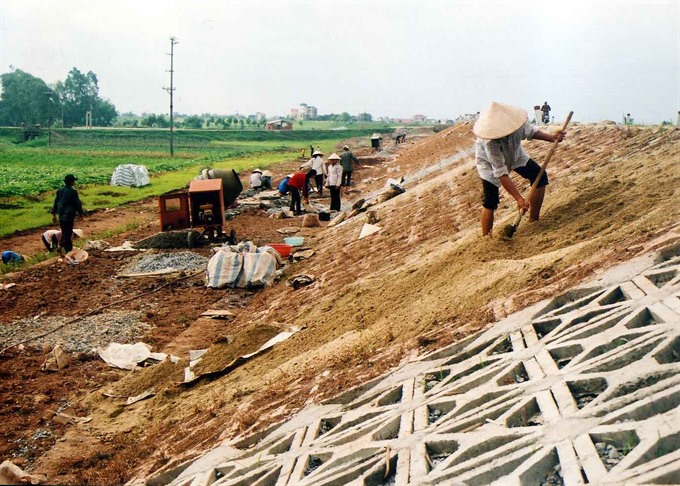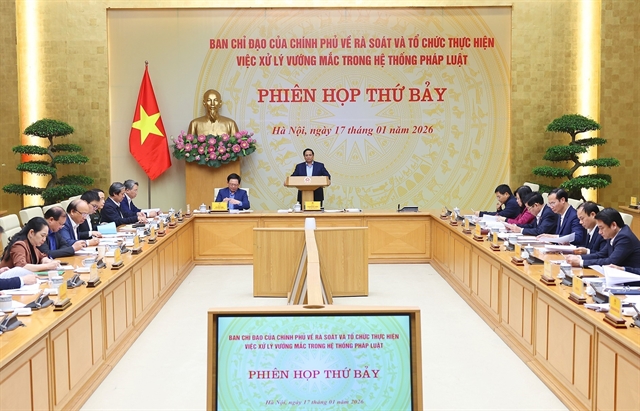 Society
Society

Some 80 per cent of construction landfills along the capital city’s riverbanks are operating without licences, the Department of Agriculture and Rural Development said.
 |
| Workers of the Ba Đình Investment and Development Company concrete the dyke in Lĩnh Nam Commune in Hà Nội’s Thanh Trì District as this year’s storm season approaches. - VNA/VNS Photo Xuân Quyết |
HÀ NỘI — Some 80 per cent of construction landfills along the capital city’s riverbanks are operating without licences, according to the municipal Department of Agriculture and Rural Development.
A survey done by the Hà Nội Irrigation, Storm and Flood Prevention division shows that 183 of 220 landfills in the city are operating illegally, a Tiền Phong (Vanguard) report quotes the department as saying.
This means that some 1,400ha of 1,500ha of construction landfills are being exploited illegally.
Among the 37 landfills that are operating with licences, violations of license provisions were seen at 13 landfills, the newspaper reported.
It said overloaded trucks could be seen traveling along dykes to transport construction waste to and from some 80 landfills.
Large amounts of construction waste have been gathered and transported within the flood drainage routes of the Đà, Đuống and Red rivers in six districts – Gia Lâm (33 construction landfills), Từ Liêm (28), Đông Anh (23) and Ba Vì (18), as well as Hoàng Mai (17) and Sơn Tây (16).
Director of the irrigation division, Đỗ Đức Thịnh, said this illegal gathering and transporting of construction waste was damaging the dykes, embankments and riverbanks, creating favourable conditions for landslides and environmental pollution.
Some construction landfills were throwing construction waste and installing steel poles in the rivers, obstructing the river flow and flood drainage routes, he said.
In addition, a number of landfill owners were violating the Law on Mineral Resource Management and Exploitation in gathering black sand of unclear origins, Thinh added.
Trần Văn Nhân, a resident living near a construction landfill in Thường Tín District’s Vạn Điểm Commune, said that he and other residents were familiar with overloading vehicles transporting building waste in and out of the landfill for years.
Nhân said local residents have reported this to the district authority many times, but the situation has not improved.
The same situation prevails in Phú Xuyên District.
Nguyễn Quang An, deputy head of the district’s Economics Sub-department, said that the district’s authorized agencies have strengthened inspections along the 16km -long dyke, but it was not effective as truck drivers usually informed each other and shifted to the Hoà Mạc-Đồng Văn route instead of the dyke road.
Meanwhile, as many as 18 locations in the capital city are at risk of inundation in Ba Vì, Phúc Thọ, Đan Phượng, Thường Tín, Phú Xuyên, Long Biên and Sóc Sơn districts since the city’s drainage system is overloaded, the Hà Nội Sewerage and Drainage Limited Company has warned.
The city has chalked out plans to actively prevent flooding at these locations.
Lieutenant Colonel Trần Xuân Thanh of the Hà Nội’s Police Department said that they would launch campaigns focused on deterring violations on dyke systems, such as illegal sand exploitation and the plying of overloading trucks.
He said that it was necessary to install traffic signals to restrict the overloading of trucks and protect the dyke routes. – VNS




